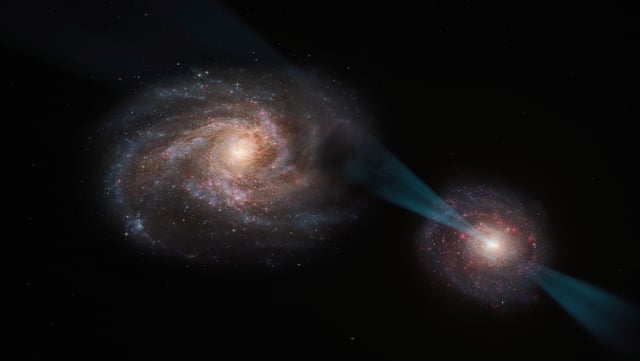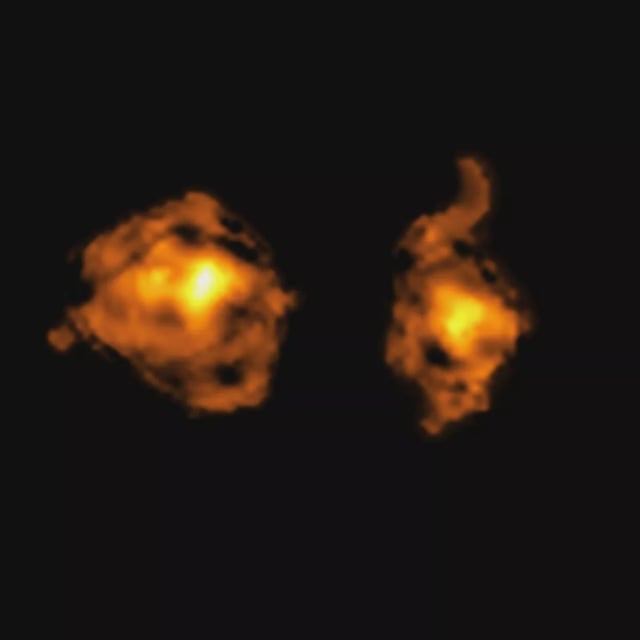Overview
- Scientists observed a 'cosmic joust' where a quasar's radiation from one galaxy pierced and disrupted the star-forming gas of another galaxy during their collision.
- The event, occurring 11 billion years ago, was captured using ALMA and ESO's Very Large Telescope in Chile, marking the first direct observation of this phenomenon.
- Radiation from the quasar transformed the companion galaxy's gas into dense clumps too small for star formation, suppressing its ability to produce new stars.
- The merger funneled gas into the black hole powering the quasar, fueling further radiation outbursts and intensifying the quasar's activity.
- The findings, published in Nature on May 21, 2025, confirm long-standing theories about quasar-driven star formation suppression and galaxy evolution.


